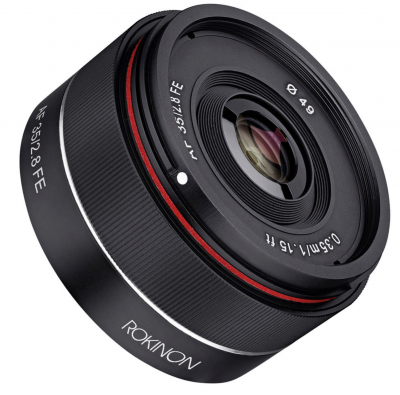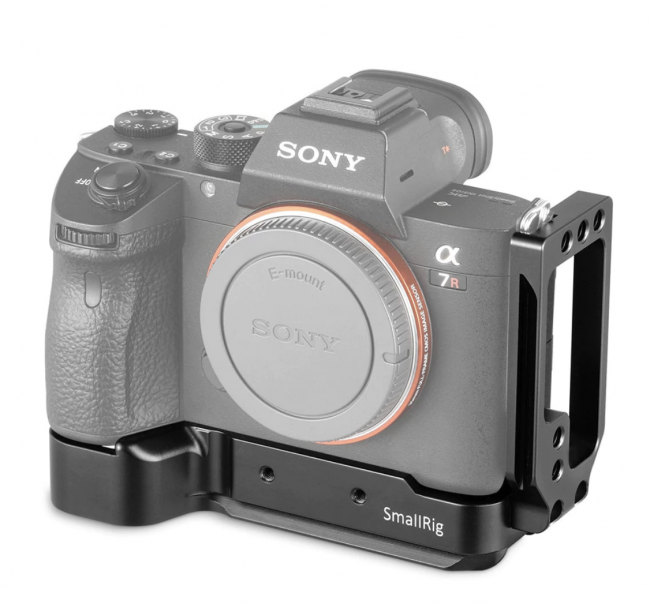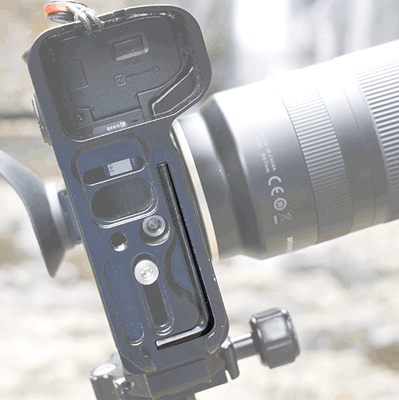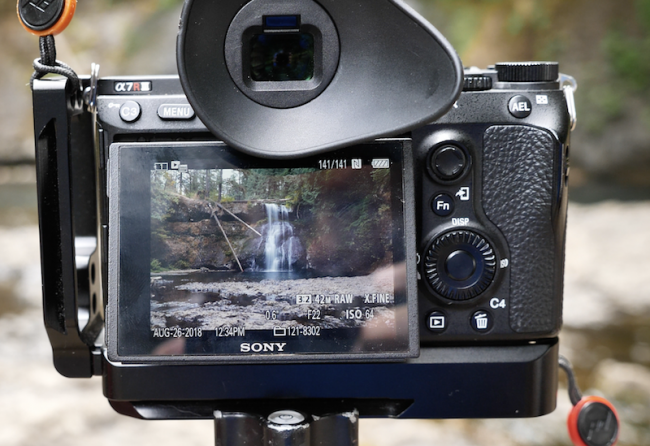Canon EOS R - Announced
/The Canon EOS R - Canon Reimagining the Future! Be the RevolutionStressing that you should ADD this to your kit. It is NOT replacing the current EOS system.
FULLY COMPATIBLE with CURRENT EF and EF-S lenses! No compromising when you use adapters. (my experience is a slight, very slight compromise)
Three adapters maintaining all current lens systems
Standard (small compact adapter)
Standard with customizable control ring (also found on the new RF mount lenses) - Control ring can be assigned a variety of functions from ISO to Exposure Compensation
Adapter with drop-in CPL or ND filter lens. This lets you use small rear filters with ANY lens.
Same diameter lens mounts with a decreased distance to the sensor.
Decreased distance means the front element can be smaller and more compact.
Enhanced overall optical performance. Easier to offer f/1.2 lenses
12 electronics contacts offer the fastest communication of any Canon mount system and enhanced IS in future
New Multifunction slide control - Customizable with swipe and left or right tap actions. After using this feature for a few days I am not a fan. Learn more in this video.Very customizable in general - even the mode dial can be assigned a different function and customizability extend to different functions for buttons when you are in photo andvideo modes.New Flexible Priority(FV) AE mode - A slightly more automatic manual mode - You choose what to adjust and rest of settings will follow suit. A faster way to switch which setting you want.That fully articulating touchscreen experience that so many love that Canon provides very well. The touchscreen can also function as a touchpad (when you are using the EVF)EVF is big, bright and beautiful. Good display of info inside that is customizable with the level of info.Low light focusing capable to -6 EV with a f/1.2 lens VERY IMPRESSIVE. Also offers Eye AF or Face detect but I found Eye AF to be finicky and Eye AF does not work in Continuous AF mode.The BadOne Card Slot (this make the camera less exciting for many professionals)Eye AF does not work but face detection works very well.AF is good but not fast and burst rate with continuous AF falls to just 3 fps.No built-in intervalometer but there is time-lapse movie mode.Strength - Canon shooter with existing lenses looking for the future of the Canon system - this is a solid start. I think we will see a more pro level version within the next year if not sooner.The Canon EOS R full-frame mirrorless camera is scheduled to be available in October 2018 for an estimated retail price of $2299 for the body only. It will also be sold as a body-and-lens kit with the new RF 24-105mm F4 L IS USM lens for $3399.SPECS -
MP: 30MP Full Frame CMOS sensor and DIGIC 8
File Format: JPEG, RAW (14 bit), C-RAW w/ Dual pixel RAW support
EVF: OLED 0.71x Magnification
Low Light Focusing: EV –6
AF - Dual Pixel CMOS AF wurg 565 manually selectable AF points
ISO sensitivity: 100 to 40000 (extended ISO: 50, 51200, 102400)
Shutter speed: 1/8000 to 30 seconds (Bulb)
Flash Sync: 1/200 second
Continuous shooting performance: 8 fps w/ servo AF 5 fps
Video: 4K at 30p, 1080p FullHD at 60p, 720p at 120p Canon Log and 10bit 4:2:2 HDMI output
LCD Screen: 3.15" 3.69M dots full touchscreen
Recording Media: 1 SD / SDHC / SDXC card slot
Battery: LP-E6N / LP-E6 battery ~ 450 shots per charge - USB charging inside the camera with LP-E6N
Advanced Control (swipe bar)
Advanced Durability
Size: 135.8 x 98.3 x 84.4 mm
Weight: 660 g (including battery / memory card) · 580 g (body only)
Availability and Pricing
The Canon EOS R full-frame mirrorless camera is scheduled to be available in October 2018 for an estimated retail price of $2299 for the body only. It will also be sold as a body-and-lens kit with the new RF 24-105mm F4 L IS USM lens for $3399.
Four new R-mount lenses
RF 24-105 f/4 Canon Nano USM focus motor (evolution)
RF 28-70 f/2 Zoom (world's first zoom lens at f/2 for full frame) Expected to be sharper //Revolution than most primes
RF 50mm f/1.2 L
RF 35mm f/1.8 IS Macro - Street shooting and 1/2 macro size lens




 The included hex wrench is magnetically attached to the bottom making sure it is always available. I am used to high-quality L brackets costing several hundred dollars. This SmallRig bracket is just $47!! It attaches through the tripod socket and sits very securely at the base of your camera. Remember the weakest point in weather sealing on the Sony cameras is the bottom, attaching the SmallRig L-Bracket raises the camera off whatever surface you place it on, add additional protection. I no longer worry about where I am setting my camera down.
The included hex wrench is magnetically attached to the bottom making sure it is always available. I am used to high-quality L brackets costing several hundred dollars. This SmallRig bracket is just $47!! It attaches through the tripod socket and sits very securely at the base of your camera. Remember the weakest point in weather sealing on the Sony cameras is the bottom, attaching the SmallRig L-Bracket raises the camera off whatever surface you place it on, add additional protection. I no longer worry about where I am setting my camera down.














 SIGMA Corporation is pleased to announce the upcoming launch of interchangeable lenses for the Sony E-mount digital camera series with full-frame image sensors. SIGMA will gradually introduce the lenses as members of the Art line, which offers photographers the highest level of optical performance.
SIGMA Corporation is pleased to announce the upcoming launch of interchangeable lenses for the Sony E-mount digital camera series with full-frame image sensors. SIGMA will gradually introduce the lenses as members of the Art line, which offers photographers the highest level of optical performance.








 The HVL-F60RM External Flash from Sony is the new top of the line flash. similar to
The HVL-F60RM External Flash from Sony is the new top of the line flash. similar to 




 Sony has announced a major firmware update for the Sony A9 - More about the functions and enhancements, as well as the link to download the update, can be found below along with some quick thoughts about what this might mean for Sony a7RIII users.
Sony has announced a major firmware update for the Sony A9 - More about the functions and enhancements, as well as the link to download the update, can be found below along with some quick thoughts about what this might mean for Sony a7RIII users.
 Sony has announced the latest addition to the rapidly-growing E-mount lens lineup. The 18-135mm f/3.5-5.6 gives an equivalent 27-202.5mm range when mounted on the α6500, α6300 and α6000 cameras and provides Optical SteadyShot (OSS) stabilization.Holy crap it's been over FOUR years since Sony has released an E-mount lens?! Looking back I can't find anything from Sony for their crop sensor line since the 16-70 f/4 Announced Aug 27, 2013. Third party manufacturers like Sigma have filled in some of the gaps but it is clear that filling out the FE mount line(for the full frame a7/a9 series cameras) was a priority. Now we should see a few more e mount lenses for their crop sensor line - the a6000/6300/6500. Sony needs more affordable lenses in this category to compete with Canon.
Sony has announced the latest addition to the rapidly-growing E-mount lens lineup. The 18-135mm f/3.5-5.6 gives an equivalent 27-202.5mm range when mounted on the α6500, α6300 and α6000 cameras and provides Optical SteadyShot (OSS) stabilization.Holy crap it's been over FOUR years since Sony has released an E-mount lens?! Looking back I can't find anything from Sony for their crop sensor line since the 16-70 f/4 Announced Aug 27, 2013. Third party manufacturers like Sigma have filled in some of the gaps but it is clear that filling out the FE mount line(for the full frame a7/a9 series cameras) was a priority. Now we should see a few more e mount lenses for their crop sensor line - the a6000/6300/6500. Sony needs more affordable lenses in this category to compete with Canon. Based on the quality of recently released lenses I expect this to be a good lens and a strong value, especially for the traveler looking to take just one lens. The compact lens weighs just 325 g (0.72 lb)The new E 18-135mm F3.5-5.6 OSS APS-C Zoom Lens will ship in February 2018 and will be sold for about $600 US and $780 CA
Based on the quality of recently released lenses I expect this to be a good lens and a strong value, especially for the traveler looking to take just one lens. The compact lens weighs just 325 g (0.72 lb)The new E 18-135mm F3.5-5.6 OSS APS-C Zoom Lens will ship in February 2018 and will be sold for about $600 US and $780 CA


